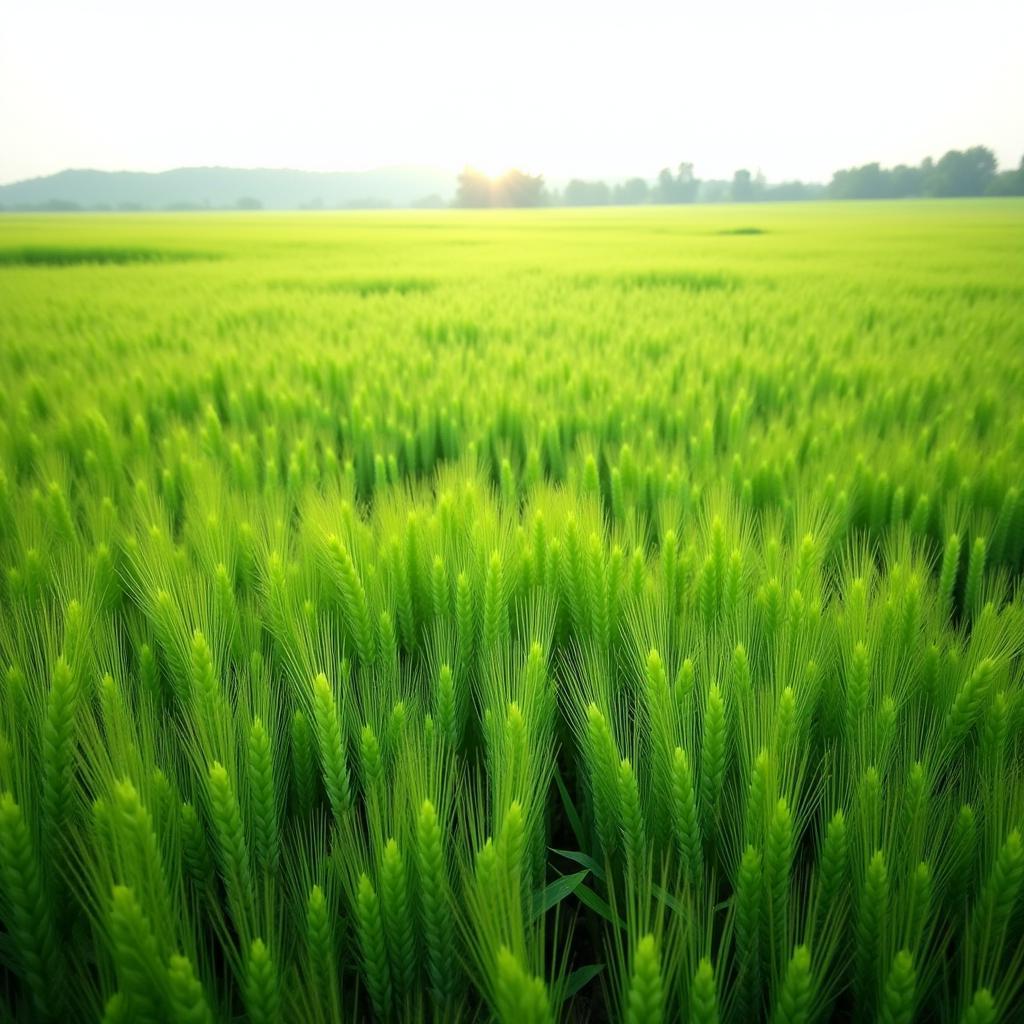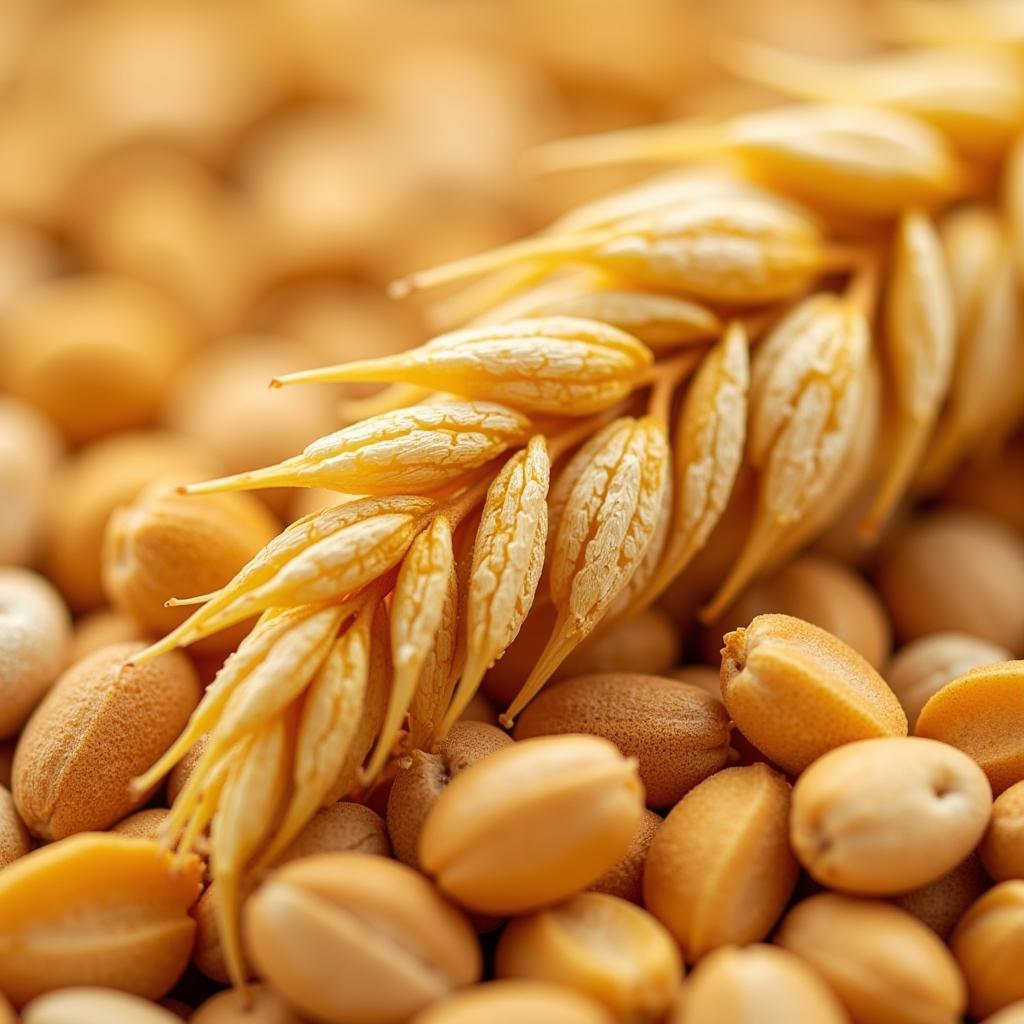Wheat stands as a cornerstone of Pakistan’s agricultural landscape and a staple in its people’s diet. The nation cultivates a diverse array of wheat varieties, each meticulously developed to thrive in specific climates and meet particular needs. Understanding these varieties is crucial for farmers, policymakers, and consumers alike. This guide delves deep into the world of Wheat Varieties In Pakistan, exploring their characteristics, advantages, and significance in ensuring food security.
Factors Influencing Wheat Variety Selection in Pakistan
Choosing the right wheat variety is paramount for a successful harvest. Farmers in Pakistan consider several factors when making this crucial decision:
- Climate: Pakistan’s climate varies significantly. Northern regions experience cold winters, while the southern parts endure hot and arid conditions.
- Soil Type: From fertile alluvial soils in Punjab to saline-affected lands in Sindh, soil types across Pakistan demand adaptable wheat varieties.
- Pest and Disease Resistance: Different wheat varieties exhibit varying levels of resistance to prevalent pests and diseases.
- Yield Potential: Farmers naturally gravitate towards varieties that promise high yields, maximizing their output per acre.
- Market Demand: Consumer preferences, milling quality, and end-use applications influence which wheat varieties farmers choose to cultivate.
 Wheat Field in Pakistan
Wheat Field in Pakistan
Major Wheat Varieties Cultivated in Pakistan
Pakistan boasts a rich tapestry of wheat varieties, each with unique characteristics. Here are some of the most prominent ones:
1. Punjab Region
- Faisalabad-85: Known for its high yield and excellent chapati-making qualities.
- Millat-15: A popular variety due to its early maturity and resistance to rust diseases.
- Punjab-11: Highly adaptable and performs well in both irrigated and rain-fed conditions.
2. Sindh Region
- Sindh-89: Well-suited to the hot and arid climate of Sindh, known for its drought tolerance.
- Mehran-89: Exhibits resistance to salinity, a significant concern in parts of Sindh.
- NIA-Amber: Offers good yield potential and possesses resistance to various diseases.
3. Khyber Pakhtunkhwa Region
- Pirsabak-08: A high-yielding variety suitable for the cooler regions of Khyber Pakhtunkhwa.
- Ghaneemat-13: Known for its excellent flour quality and adaptability to rain-fed areas.
4. Balochistan Region
- Balochistan-96: Adapted to the arid and semi-arid conditions of Balochistan, known for its drought tolerance.
- Kohsar-96: Offers good yield potential and is resistant to lodging.
 Close-Up of Wheat Grain
Close-Up of Wheat Grain
The Role of Research and Development
Pakistan’s wheat production landscape is continuously evolving thanks to the tireless efforts of research institutions like the National Agricultural Research Centre (NARC) and provincial agricultural universities. These institutions play a critical role in:
- Developing New Varieties: Through continuous breeding programs, researchers develop improved wheat varieties with enhanced yield potential, disease resistance, and adaptability to changing climatic conditions.
- Seed Production and Distribution: Ensuring that farmers have access to high-quality seeds of improved varieties is vital. Research institutions often undertake seed multiplication and distribution programs.
- Technology Transfer: Sharing knowledge and best practices with farmers is crucial. Research institutions organize training programs, workshops, and field demonstrations to disseminate information about new varieties and cultivation techniques.
Challenges and Future Prospects
While Pakistan has made significant strides in wheat production, challenges remain:
- Climate Change: Increasing temperatures, erratic rainfall patterns, and extreme weather events pose a threat to wheat production.
- Water Scarcity: Pakistan faces water scarcity issues, and efficient irrigation practices are crucial for sustainable wheat cultivation.
- Pest and Disease Management: New and evolving pests and diseases require constant vigilance and the development of resistant varieties.
Looking ahead, Pakistan’s wheat sector has significant potential for growth:
- Precision Agriculture: Adopting precision agriculture techniques like sensor-based irrigation and fertilizer application can optimize resource use and increase yields.
- Climate-Smart Agriculture: Implementing climate-smart agricultural practices like conservation tillage and drought-tolerant varieties can mitigate the impacts of climate change.
- Value Addition: Exploring opportunities for value addition, such as processing wheat into flour, bread, and other products, can enhance farmer incomes and create jobs.
FAQs about Wheat Varieties in Pakistan
1. What is the highest-yielding wheat variety in Pakistan?
Determining the absolute highest-yielding variety is challenging as yields can vary depending on environmental factors and management practices. However, varieties like Faisalabad-85, Millat-15, and Punjab-11 are consistently recognized for their high yield potential.
2. What are the key characteristics of drought-tolerant wheat varieties?
Drought-tolerant wheat varieties possess characteristics like deep root systems, reduced water loss through transpiration, and the ability to maintain physiological processes even under water stress. Sindh-89 and Balochistan-96 are examples of drought-tolerant varieties.
3. Where can I get information about the latest wheat varieties released in Pakistan?
The National Agricultural Research Centre (NARC) website, provincial agricultural universities, and agricultural extension departments are excellent resources for staying updated on the latest wheat variety releases.
4. Are there any organic wheat varieties available in Pakistan?
Yes, there is a growing interest in organic agriculture in Pakistan. Several organizations and initiatives promote organic farming practices, including the use of organic wheat varieties.
5. What is the role of the government in promoting wheat production in Pakistan?
The government plays a crucial role by providing subsidies on inputs like fertilizers, setting minimum support prices for wheat, investing in research and development, and implementing policies to ensure food security.
Conclusion
Wheat varieties in Pakistan represent a fascinating blend of tradition, innovation, and adaptation. From the bustling fields of Punjab to the arid landscapes of Balochistan, farmers carefully select varieties that best suit their specific conditions. As Pakistan navigates the challenges of climate change and food security, continued research, sustainable practices, and a focus on farmer empowerment will be crucial to ensuring that this vital crop continues to nourish the nation for generations to come.
Need assistance? Contact us:
Phone: +923337849799
Email: [email protected]
Address: Dera Ghazi Khan Rd, Rakhni, Barkhan, Balochistan, Pakistan
Our dedicated customer support team is available 24/7 to assist you.